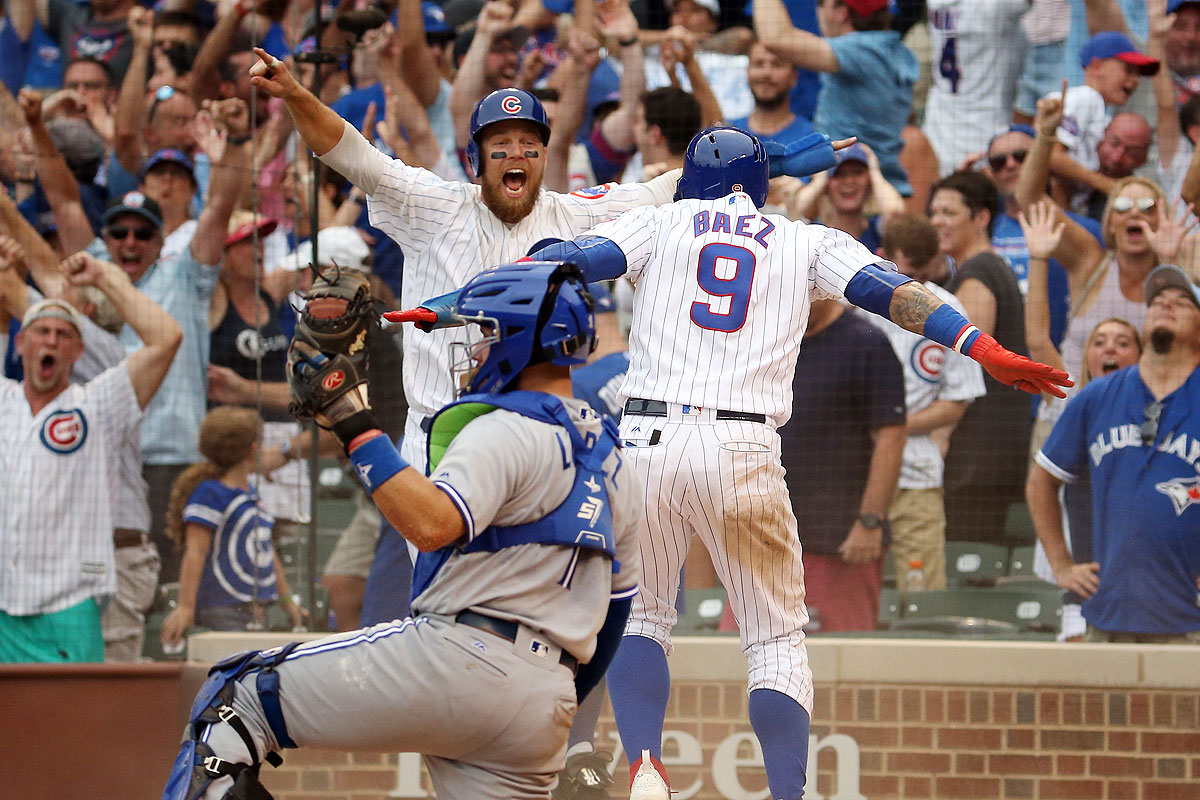The Cubs slumped into the second half of the season at 43-45—including 19-25 on the road and a critical 29-39 when facing right-handed starters—leaving them five and a half games behind the Milwaukee Brewers and tied with the Cardinals. Their run differential was exactly zero: 399 runs scored, 399 runs allowed.
Today they're ten games over .500, with a winning record on the road and a much-improved .500 record against right-handed starting pitching. How'd it happen? Everything's gotten better.
.png)
The Cubs' pitching has improved, perhaps as a function of good luck, or a regression from bad luck to normal luck. Jake Arrieta and Kyle Hendricks ran ERAs over 4.00 in the first half; in the second, they're both well below 3.00. Jose Quintana has upped his strikeout rate and lowered his walk rate since joining the team, allowing them to bump a still-struggling John Lackey down to the fifth starter slot (where he's nonetheless gone 5-0 thanks to great run support).
The decline in opponents' batting average on balls in play is also a factor. Last year the Cubs allowed a .255 BABIP, a historic figure. That ballooned to .290 in the first half, which is actually close to normal, but a huge falloff from last year's freakish total—and perhaps higher than expected from a team set up to be excellent defensively. Now that it's back down to .269, they're giving up fewer runs.
BABIP plays a role in their offensive resurgence as well. Their first-half total, .280, was bad—they finished the first half tied for the fourth-lowest BABIP in baseball, while the Rockies were first at .329. In the second half, the Cubs are up to .328, good for third-best.
In short, the team seemed to have some bad luck in the first half that one could reasonably expect to turn their way in the second half, and that's what's happening.
They still have the worst record of any division leader in baseball, though, and merely the fifth best record in the National League—if they were in the NL West, they'd be behind both the Rockies and Diamondbacks and twenty-two games behind the Dodgers, who have gone 28-6 in the second half compared to the Cubs' 24-12. If the Dodgers finish the season with their current .718 winning percentage, they'll tie the major league record with 116 wins.
But even that's not as bad as it looks. The Dodgers have an incredible winning percentage so far in the second half (the red column below), but the underlying numbers are less impressive. In terms of how many runs the Cubs are scoring versus how many they're allowing (the black column below), they're virtually identical to the Dodgers.
.png)
On average, the Cubs are outscoring their opponents by a meaningless 0.04 runs fewer than the Dodgers. But the Dodgers have a much better winning percentage; that happens. On the other hand, the Cubs are playing noticeably better than the other top five second-half teams, all of whom are likely playoff opponents.
It's looking like the Dodgers will play the role the Cubs did last year: Not just the team to beat in the playoffs, but a legendary regular-season team. Under the hood, though, the Cubs have been keeping pace with them of late, and looking like they can can compete with the other teams they'd need to beat to repeat.



